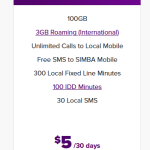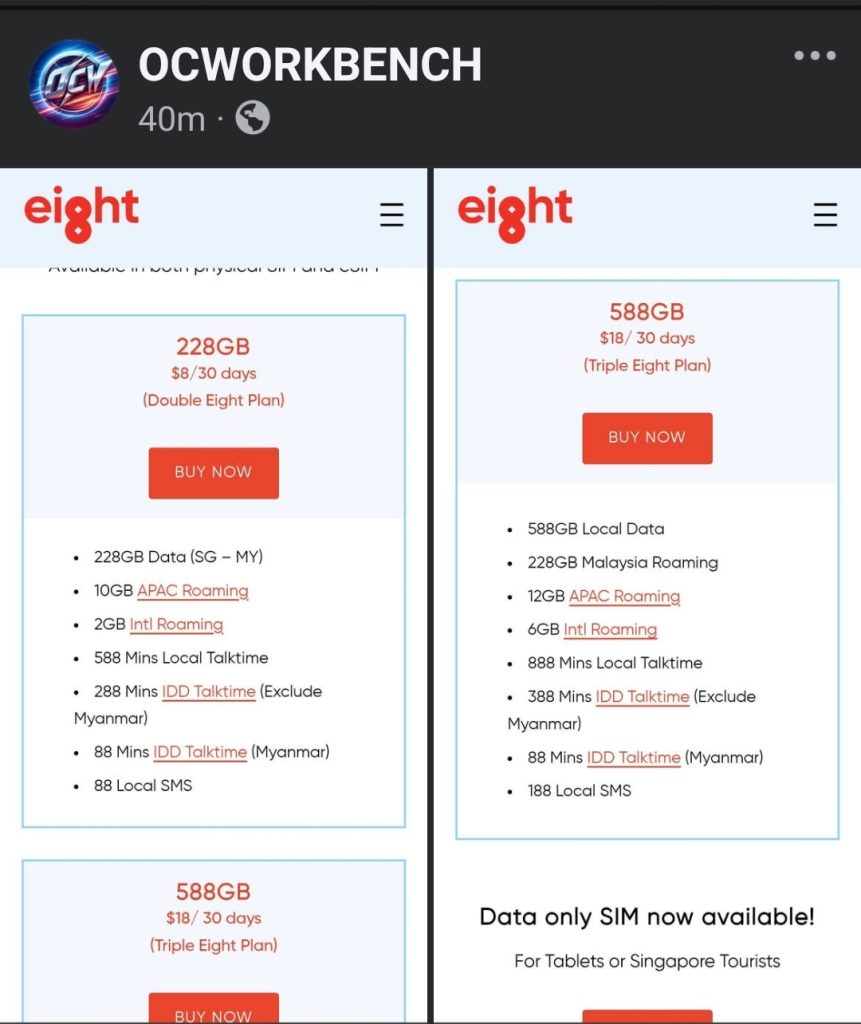StarHub’s $8 plan is definitely shaking up the market. With this low-cost offer, it’s forcing other telcos to respond by adjusting their data bundles and roaming options.
In the mid-range price segment, StarHub aims to attract customers with its “Triple Eight” plan, priced at $18/month. The newly revised plan is quite competitive, offering 588GB of local data, 58GB of roaming data in Malaysia, 12GB in the APAC region, 6GB for international use, 888 minutes of local talk time, 388 minutes of IDD calls, and 188 local SMS.
However, its APAC roaming is limited to only six countries/regions, and in three of them, voice roaming isn’t even supported. This means you can’t make voice calls back to Singapore or internationally, reducing its usefulness to just data roaming. For international roaming, the 6GB option only supports voice roaming in 22 countries/regions.
In comparison, SIMBA’s SuperRoam plan offers voice roaming in many more locations—63 countries internationally and another 60+ in Groups B, C, and D, if you top up your wallet. Users can make calls either directly or via the SIMBA Voice App, giving it a significant edge in terms of voice roaming coverage.
As for data, SIMBA’s SuperRoam 50GB plan offers more Malaysia roaming with its 300GB shared Singapore-Malaysia bundle, while StarHub’s “eight” plan offers 588GB of local data and 58GB of Malaysia roaming. Both plans provide more data than most users are likely to consume.
For local talk time, SIMBA offers free calls to all mobile numbers and 500 minutes for calls to local landlines, while StarHub’s 888 minutes should comfortably cover both mobile and landline needs.
On the SMS front, SIMBA offers 100 texts, whereas StarHub provides 188.
Price-wise, SIMBA’s SuperRoam 50GB plan is S$20 per 30 days, while StarHub’s “eight” plan is priced at S$18/month. So, which one would you choose?








